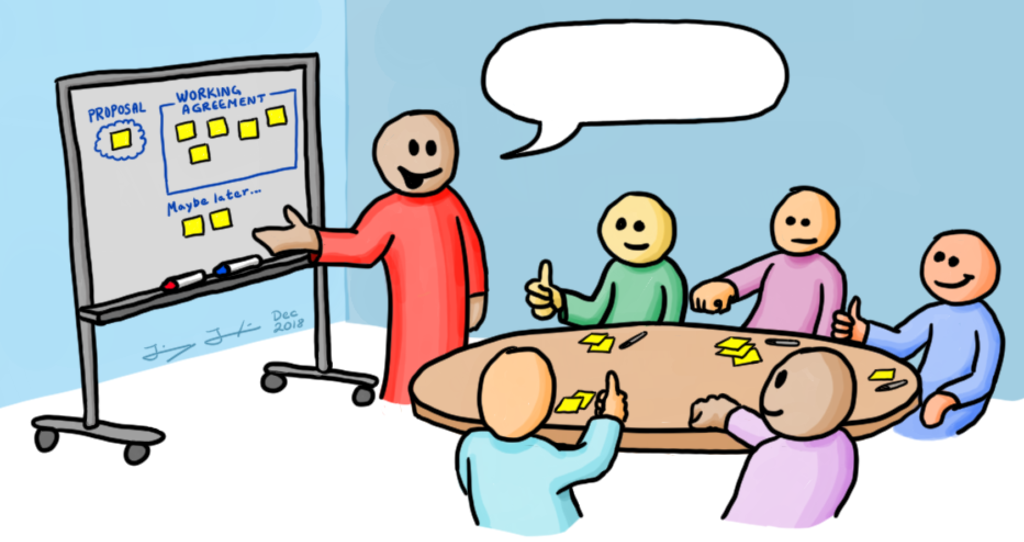How do you encourage active participation from your team?
Perhaps, you have an important decision to make and you want to get a lot of quality input in pursuit of the strongest solution. So… you prepare the room, invite the key participants, and get ready to receive an abundant amount of ideas from every team member. What you actually get instead is a group of mainly silent observers with a few dominant voices. Indeed, it can be a challenge to get the very best from the group if there is not 100% participation.
Here are techniques you can use to encourage full participation:
1. Call on quiet people. Let people know in advance of the meeting that you value their opinion and want to include their voices so you would like to find ways to include them. When you call on them it is because you are merely eager to hear their thoughts to reach the best decision possible. This can have the intended effect of creating a safe space where they do not feel singled out and are more interested to share. To work with the style of introverts, you can give them some additional time to write their ideas first.
2. Use a default guideline, such as “silence denotes agreement.” Author Bob Frisch talks about a common problem in meetings, which is when a potential new plan is discussed and when asked if anybody objects or has concerns, nobody says anything. So the leader mistakenly assumes that everybody is on board. A few days go by and some people begin to offer doubts, even though they had those same reservations at the time of the meeting. To address this challenge, he recommends setting a key ground rule – silence means agreement. This would prompt more people to open up; otherwise, it is safe to say that if they do not share, it is because they agree. It is important to note that in a psychologically safe environment, people usually feel comfortable and empowered to contribute. If this necessary condition is not present, there are other things that can be done to include people’s voices, but it is a temporary fix because psychological safety is an essential ingredient for long-term team success.
3. Take anonymous polls. People can write down their questions or concerns and deposit them in a box to be read aloud. They can also use polling websites that would allow them to submit their responses anonymously and have their answers projected for all to see in real-time. A benefit is that potential problems can be aired for those people who may not want to speak up and possibly be seen as a naysayer. This technique should be used sparingly because you want to try and have as much open discussion as possible, which is what you get in psychologically safe teams.
4. Have small group discussions. People are more likely to participate when they are just talking to one or two others. After the time is allotted for them to flesh out their thoughts, each group can have a representative to report on the ideas or challenges. This is also a great way to get introverts involved because it creates a more comfortable space to share.
5. Use empathy to elicit more voices. Bob Frisch mentioned how people are more likely to speak up on others’ behalf than their own. A question, such as “what objections or concerns might your direct reports or other teams have,” can prompt additional participation. This distance will allow them to share other people’s possible perspectives that may not have been offered if it was coming directly from them.
Each person on your team plays a vital part. By not getting them involved, you are neglecting essential resources. While there is no set way to encourage participation because it is a matter of doing what fits with your team and culture, building phycological safety and having communication norms will go a long way for creating excellence in teams.
Quote of the day: “Not all who are silent do not want to talk.” -Author Debasish Mridha
Q: What’s the best method you use to prompt somebody’s participation? Comment and share with us, we would love to hear from you!
*The next blog in this team series 7/10 will jump into the goal of achieving collective intelligence


